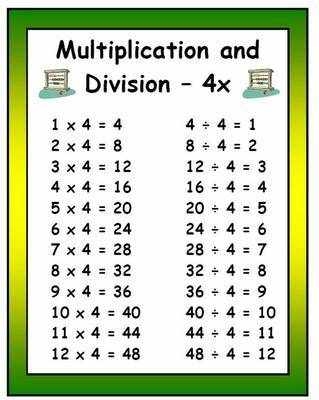
Any society assumes certain rules and norms of behavior, called etiquette. In the modern world, alas, even adults do not always adhere to them, but they are at least able to take responsibility for their own actions. In the case of a lack of ethics in school-age children, everyone should be ashamed - both the little offenders themselves, and their parents and teachers.
Moms and dads should be the first to instill in the student the skills of polite communication with people and behavior in society.

What types of etiquette to teach a student?
Etiquette is often perceived as a kind of unified system, however, in the complex world of the 21st century, no less than two dozen branches of ethics stand out. Not all of them can be useful for schoolchildren due to their age, but a good half applies even to kids. Parents, explaining to their child the peculiarities of the rules of behavior, must describe the norms adopted in a number of situations.
- Exit etiquette describes the features of behavior in public places, such as theater, cinema. The importance of this area lies in the fact that here interaction takes place with strangers who are unlikely to reduce the existing problem to a joke.
- Guest ethics tells what to do at a party so as not to offend the owner. Children love to visit, so you should tell them how to make sure they are always welcome.
- Rules of conduct in public transport are relevant for those children who regularly use the bus or metro to get to school or to classes in a circle. These rules in many ways resemble similar recommendations for public places, but differ in closer (sometimes literally) contact with others.
- Speech etiquette forms public opinion about a person, regardless of where he is. Children from an early age should know that politeness is the key to success in any situation, and rude and obscene expressions are not allowed at all.
- Family etiquette determines the specifics of family relationships. This branch of ethics is perhaps the least standardized, since the degree of equality between elders and minors in each family is determined individually.
- Rules of conduct at the table teach the child that even the way they eat can affect the negative perception of a person by others.
- Telephone etiquette in recent decades, it has significantly expanded as a concept, since it now also includes the rules for communication by e-mail and in social networks. He prescribes how to behave in situations when you communicate with a person you cannot see.
- Educational etiquette - these are the rules of conduct in schools and other similar educational institutions. Perhaps, the maximum influence will be given to this aspect already within the walls of an educational institution, but still it is better for a first grader to know at least some of the basics before sitting down at a school desk for the first time.


When to start teaching?
Probably, there are no such parents who, at least subconsciously, did not understand the meaning of the rules of etiquette, but the question of when to start teaching the baby remains open. Often, a conflict arises between mothers, fathers and children due to the reluctance of the kids to fulfill the requirements of adults, but the reason for this may not be the child's flagrant irresponsibility, but only age characteristics.
It should be understood that etiquette training can also occur unconsciously, as the baby learns a lot by simply observing others. From the very birth of a child, family members should be role models - this reduces the likelihood that he "picks up" bad manners. Phrases like “bon appetit” or “thank you” can be addressed to a crumb at the appropriate moment, even when he still clearly does not understand their meaning.
At about the age of two, you can start conscious learning, but you shouldn't turn it into a lesson.


The assimilation of the rules at this stage occurs thanks to thematic games, the task of which is to more actively use all the same words of courtesy. It is far from a fact that the child will immediately understand, learn all the recommendations, but it is not permissible to scold him for this at such an age. However, if the kid makes some obvious violations of the rules, he must be told about it. The little offender should feel that he has done something wrong, but you should not bring him to tears.
After reaching the age of four, you can begin to instill in your child the etiquette of all the industries listed above. This issue is also dealt with by teachers in kindergarten and school, but the main responsibility still lies with the parents. From that moment on, the child's social circle expands, and the task of adults now also becomes to monitor the child's social circle. A child at this stage in his life still does not understand the difference between good and bad, therefore he can easily adopt bad manners from a person who does not seek to behave well.


Basic Provisions
Each of the branches of etiquette has a dozen of its own rules, but for instinctive orientation in any situation the student must firmly know at least the most important positions.
- Politeness towards others regardless of their status and age is required. You should use the generally accepted forms of greetings and farewells, requests and expressions of gratitude. Even accidentally ignoring such simple actions can lead to resentment or anger.
- Older people deserve a heightened amount of respect - in dealing with them, familiarity should be avoided (at least). People of retirement age or with disabilities often need outside help, and schoolchildren are among those who must provide it in the first place. This rule is especially important in public transport conditions: if there are no more empty seats, and you are sitting, make way for an elderly person or a disabled person.
- A person is always greeted by his dress, that is, by his appearance. Outside the home, meeting strangers is guaranteed, so you always need to look so as not to become the object of ridicule or condemnation. Cleanliness and neatness are mandatory characteristics for any member of society. According to the same saying, they are escorted through the mind, however, the constant disregard for the rules of cleanliness lowers even a genius in the eyes of others.
- Basic Courtesy Rules include avoiding the use of harsh words and forceful methods to resolve the conflict. It is not honor to get into a fight even if the other side is older and stronger. Schoolchildren are strictly forbidden to drink and smoke.
- You should not violate people's personal spaceeven if you know them well. In crowded places, it is unacceptable to shout or laugh loudly, attract everyone's attention, listen to loud music without headphones. In the cramped conditions of public transport, you can even interfere with others with a relatively quiet conversation on the phone. It is also not recommended to be too actively interested in someone else's life (for example, to spy on someone else's gadget).
You should also not speak impartially about the tastes of other people, unless they themselves violate public order.


For an instructional video of the first courtesy lessons for children, see below.



